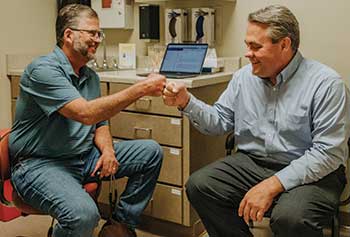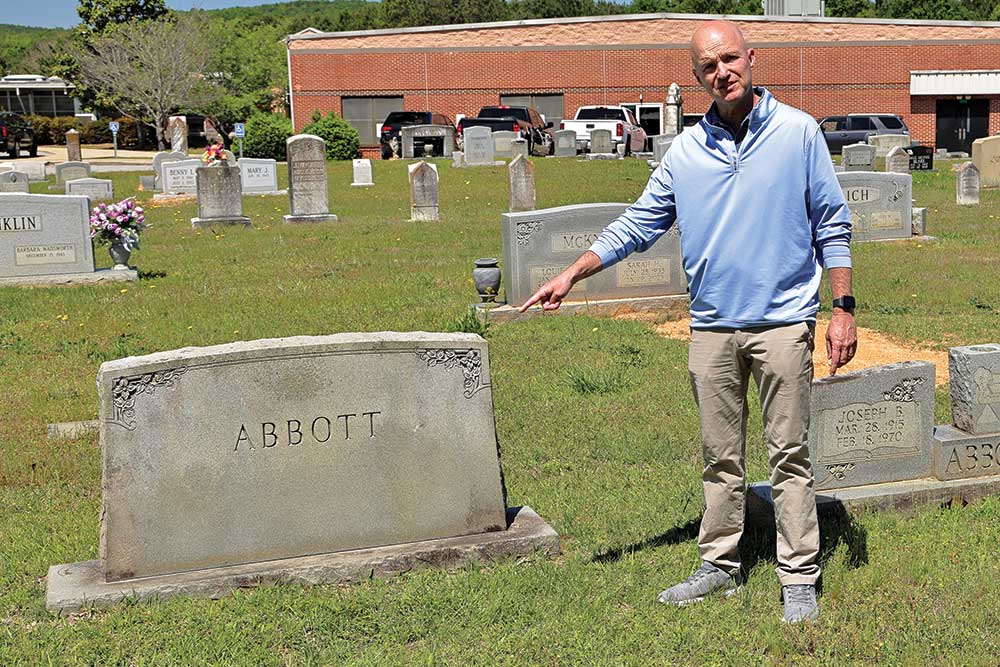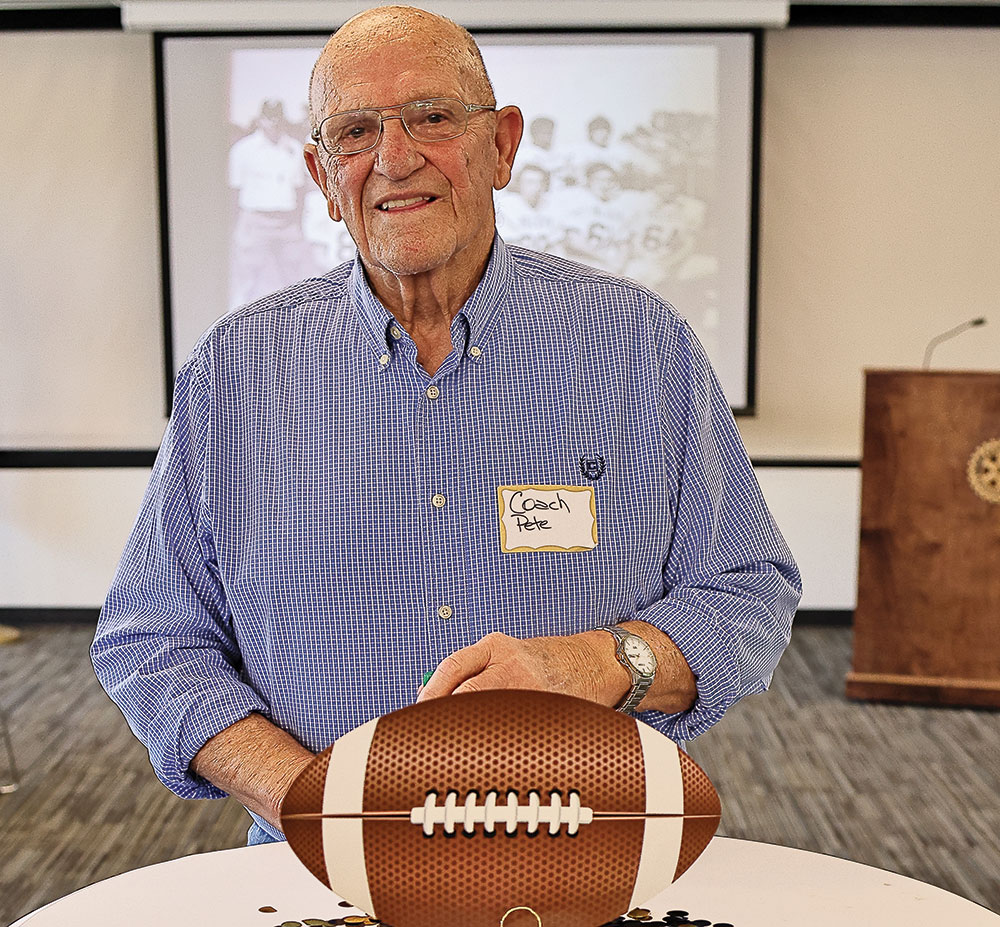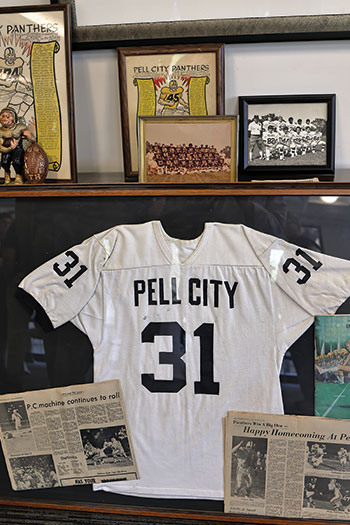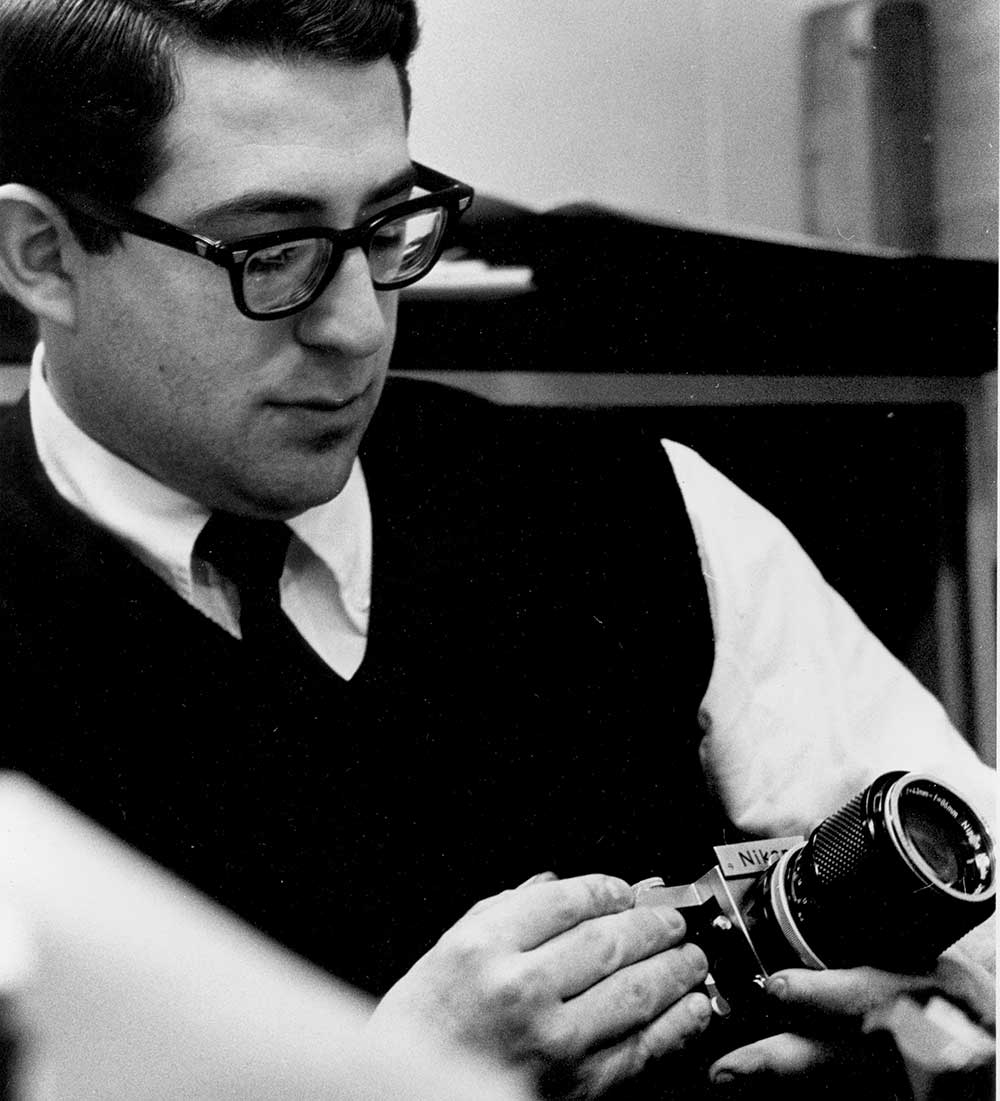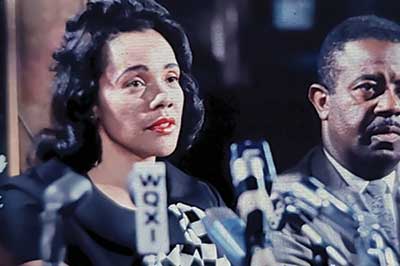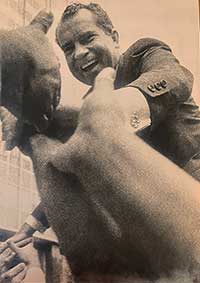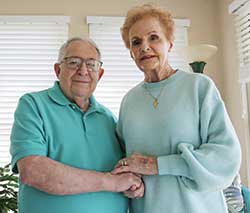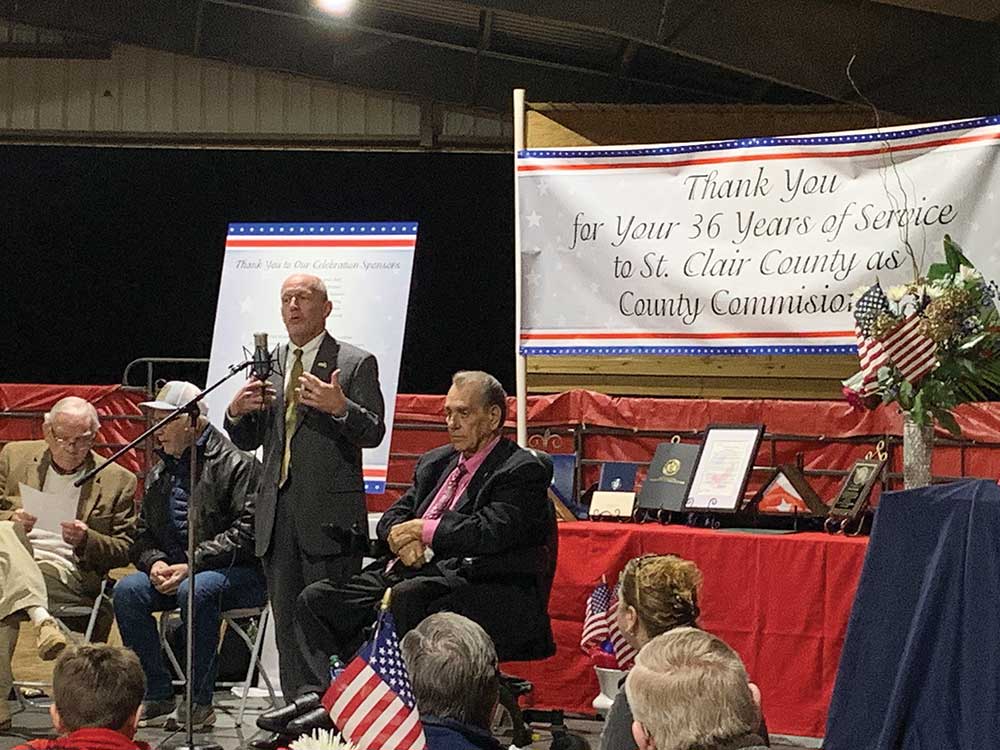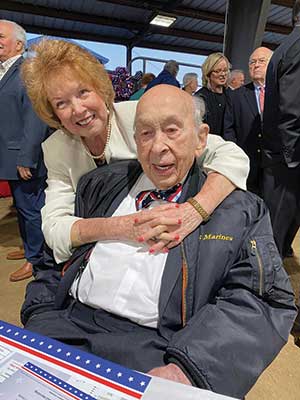Dr. Rock Helms continues focus
on moving health care forward
Story by Roxann Edsall
Photos by Mackenzie Free
He’s written plenty of prescriptions in his 24 years as a physician. Perhaps none has been quite as wide-reaching as the plan Dr. Rock Helms wrote for Pell City residents outlining how he would alleviate the pain of having to drive to Birmingham to see a medical specialist.
Two years after beginning his family medical practice with Baptist Health Systems, Dr. Helms, along with Dr. Bill McClanahan and Dr. Carl Frosina, opened a new medical clinic they named Northside Medical Associates. Since their opening in 2001, the facility has grown from those three doctors to 25 primary care providers.
While the increased number of primary care providers has been helpful in keeping up with the city’s growth, what has made the clinic most impactful is their partnership with subspecialties and the access to advanced care imaging available right in Pell City. No longer does a patient have to see a doctor here, then be referred to a Birmingham doctor for further treatment by a specialist.
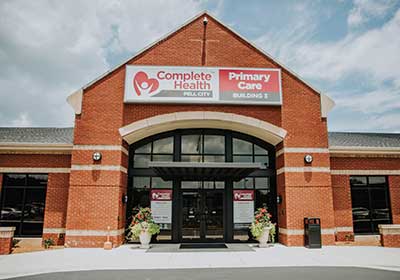
The expanded care has made a huge difference for those needing medical care in the area. “There were times as administrator for Northside that I had to stop seeing patients because there just wasn’t time to run the clinic and to see patients,” said Helms. “It was a very busy time.” The partnership sold Northside to Complete Health in 2020, allowing Helms to return to his patients.
Long-time patient and Pell City attorney John Rea appreciates Helms’ dedication and the vision he had in expanding the community’s healthcare options. “His vision has been transformative for the Pell City area,” says Rea. “He and the others grew a medical operation from a small primary care practice to now becoming a partner with other specialties. Now we can just go down the road to see a cardiologist or other specialist. It’s remarkable.”
Helms has been a part of the community since his parents, Ron and Joanne Helms, moved the family to Pell City when Rock was in second grade.
He graduated from Pell City High School in 1988 and graduated from the University of Alabama. He earned his medical degree from the University of South Alabama. After a residency at the University of Alabama, Dr. Helms returned to Pell City to his extended family. “If I hadn’t,” he jokes, “they probably would have disowned me.”
Helms and his wife, Jennifer, are the parents of seven children, four of whom are adopted. They also have two grandchildren. Family is very important to him, so he makes a point to take time off to spend with them. He is very close to his parents, who still live in Pell City, and to his mother-in-law, Sarah Rhodes, also from Pell City.
While his parents inspired him in many ways, Helms’ inspiration in the medical field was and continues to be Dr. Bill McClanahan. “He inspired me to become a doctor and remains my mentor to this day,” says Helms.
Helms describes himself as a “country doctor.” Living in a smaller town affords him the opportunity to really get to know his patients and to serve the community where he grew up. “The people in Pell City are the people who made me who I am today. I enjoy knowing my patients as completely as I can,” says Helms. “It’s a more personal relationship.”
“I know him as my doctor and as a client,” says Rea. “But I also consider him a friend. I think his strongest attribute as my physician is his willingness to take the time to listen to me.”
“Listening,” Helms agrees, “is an important part of the job, if you do it right.” Recently, he listened as a terminally ill patient confided that she did not have family to guide her through her end-of-life decision-making. “I was able to help guide her through parts of that process,” he said. “Being able to help people through life-altering events is a gift.”
Helms’ patients include many of the people he grew up with, including former teachers and classmates. “One patient I see I went to college with,” Helms says with a smile. “I still aggravate him about cheating us out of money at poker in college!”
“I think practicing medicine in your community makes you do a better job as a physician,” admits Helms. “When you’re serving the community you grew up in, and are still a part of, you know you’re going to give everything. You go the extra mile for people you are close to. I think it conditions you to try harder and makes you a better doctor.”
Lizzie Jones is one of those patients Helms credits with making him a better doctor. He looks forward to catching up with her during her appointment. “She comes with Fred, her husband of 63 years. She was a dedicated professional cook for 30 years at the nursing home in Cook Springs. She comes to her appointments dressed for church, complete with a fancy hat,” Helms says. “The whole office staff looks forward to her visits and her beautiful, warm smile. She always has a wonderful attitude, no matter what adversity she has faced.”
It’s a very gratifying job, Helms says, unlike some other jobs he has had. “I’ve worked in the corporate world, where you don’t always get that,” he says. He recalls being on call one night and receiving a call while eating dinner with his family. “An emergency room doctor calls me about help with a patient. I started to have him transfer her to Birmingham, but instead, I went in to see her. She had had a heart attack. I sent her by helicopter to Birmingham and she made it through. I got to see her for her six-month checkup, and she established me as her primary doctor. She’s been my patient ever since.”
When he’s not working at the clinic or hanging out with family in Pell City, he can be found on his bulldozer or tractor or hunting on his land in Lowndes County in South Alabama. “It’s where I go to de-stress. It’s definitely in the country,” Helms says. “You have to drive 17 miles for a bag of ice!”
Rea sums up Helms’ success as a combination of personality and commitment to both community and patient care. “He could have gone anywhere to practice medicine and probably had an easier path than the one he chose. But at his core is that commitment to community.” Pell City has benefited from that commitment to expanding the medical options locally.
Helms says his second-choice career was meteorology. Fortunately for the St. Clair County area, his first choice seems to be working out just fine.















